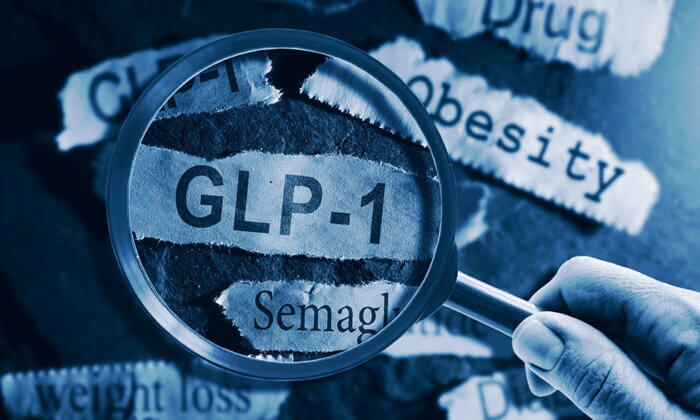The Proactive Patient
What it takes to be healthy in the digital age.
| | Reading Time: 5 minutes

In 1998, I pitched my literary agent a book idea that I thought had bestseller written all over it. The title, The ProActive Patient, was meant as a call for Americans to take more responsibility for their own health care. By enlisting physicians as partners in health care, my idea encompassed healthy diet, nutritional supplements, exercise – truly preventative lifestyle – and transparency of medical records.
In an age of specialists where no one doctor manages a case, it called for patients to keep their own medical file. The book was to explain how to replace nutrients that drugs are known to deplete (like Coenzyme Q10 with statins), and how to take nutritional supplements. I discussed partnerships with pharmacists and nurses to manage prescription medications, and wrote about how to best utilize alternative medical services like acupuncture and naturopathic medicine. It was a truly practical plan for a healthcare paradigm-shift.
My agent at the time… clapped… made positive comments on the quality of my PowerPoint slides and my enthusiasm, but that of course, wasn’t enough for publishers.
“Wellness doesn’t sell,” she informed me. There was no market for patient-centered medicine, and therefore no money in it.
I was convinced that she was wrong.
Patients Lead
Soon after, the Internet boomed. When Google Health came out, where you could store your lab tests and other medical records electronically, and your different health care providers could sign up to view them from one central location, I was thrilled. I believed the age of the proactive patient was dawning.
Then in 2011, Google Health died quietly. It simply failed. Too few were interested. The Harvard Business Review said: “Google Health should have become yet another of the super search engine’s high-impact, paradigm-busting successes. All the essential ingredients were there. A huge global market consistent with Google’s espoused mission, “to organize the world’s information.” Yet, even in the environment of a health care reform initiative in America and literally hundreds of billions of dollars of opportunity, it still swan-dived to oblivion. Nothing happened. The market was not interested.
Was my agent right after all?
The First Empowered Patient
Then along came e-Patient Dave. The Huffington Post called him, “an empowered patient who found a calling.” That calling was to reshape American health care one patient at a time using the power of the Internet. Participatory medicine had arrived. Physicians began to encourage patients to participate in their own health.
Wellness medicine was getting closer, including a number of Internet-based personal laboratory services where people could order their own lab tests without a doctor’s prescription. Legal in most states, personal laboratory services and membership-based discount labs, like Life Extension Foundation, have become big business.
I was too far ahead of my time in the 1990s, but it was starting to look like change was coming, not from doctors, but from patients.
Advice for Here & Now
Still a fragmented market sector, personal wellness medicine is gaining traction. And it will grow. In the mean time, besides switching to a plant-based diet and taking nutritional supplements, it’s a good idea for every one over thirty-five years to get a basic blood test including comprehensive metabolic panel, complete blood count, and vitamin D3 (25-Hydroxy Vitamin D).
For healthy people between thirty-five and forty-five years, it’s wise to test every few years. Between forty-five and fifty, it’s important to get a more thorough panel of tests including hemoglobin A1c and hormones.
And most importantly, find a cooperative physician (MD, DO, ND, DAOM/OMD) who will work with you as a partner, not as an authoritarian representative of the pharmaceutical industry. Let her know that you are a “proactive patient” who understands the value of collaborative care, who will take charge of managing your own health, who wants to reach optimal wellness and not just be disease free (which is important of course), but who wants to live a long healthy, active, positive life.
And my book?
It never got published, but I wrote one that did: Prolonging Health (2002), which focuses on effective disease prevention and maximum longevity, including what lab tests to get, what supplements to take, and how to talk with your doctor about forming a participatory health partnership with a proactive patient like you.
A Timely Concept, But Just Not Yet
The proactive patient is someone who cooperates with their health care provider. This doctor-patient-partnership relationship replaces the old, outdated model of a medical doctor acting as supreme authority on not only your medicine, but also your life. That model is being rejected by millions of Americans as not only dated, but morally, ethically, and economically wrong. Not only that, but with the advent of the Digital Age, medical consumers have found that even much of the science behind conventional medicine is wrong, and worse, driven by high profit pharmaceutical corporations.
We’ve found out that, in the words of Eric Topol, a cardiologist at Scripps Clinic, that the most precious part of our existence – our health – has been largely unaffected, insulated, and compartmentalized.
“Medicine is remarkably conservative to the point of being properly characterized as sclerotic, even ossified. Beyond the reluctance and resistance of physicians to change, the life science industry (companies that develop and commercialize drugs, devices, or diagnostic tests) and government regulatory agencies [read “FDA’] are in a near paralyzed state.”
Who wants that kind of doctor?
The answer Dr. Topol proposes is more technology with your smart phone as the hub. I for one, don’t want a high priest steeped in the same system he critics upselling me on digitized conventional medicine. That’s simply more of the same. What I would like to see is more direct involvement by patients in their own health care, and more investment into wiser, less expensive, sustainable approaches like acupuncture.
What Can You Do to Be Proactive?
The majority of readers of this blog have already taken the first step. You have stopped consuming the standard American diet of highly processed, chemically laden, artificially colored foods. In fact, these are not real food at all, but what I call “non-foods.” You have taken up a diet of whole, fresh food. What a concept. Eat what grows out of the ground. And, as an aware consumer, you’ve chosen organic over foods grown on depleted soils treated with chemical fertilizers and sprayed with pesticides, fungicides, and herbicides. It’s extraordinarily vital for consumers to be fully engaged, actively participating in the choses of food and medicine that go into their body.
You’ve taken another step, started to learn about what your blood tells you by ordering lab tests, getting copies of tests your doctor has taken, and finding healthier solutions to correcting imbalanced biochemistry and organic dysfunction. Learning the fundamentals of your body’s biochemistry and how to tweak it back to normal, and even optimal levels with diet, natural medicine, and nutritional supplements is the next step. But, before you can do that, you’ll need to create a system of storing and codifying your medical records and tests.
I suggest the following proactive steps:
- Always obtain copies of your all your lab tests and radiology reports, and bone density studies.
- Create a paper folder and digital file for your health and wellness profile.
- If you can, scan your medical records into a digital folder and store in on your computer’s hard drive. Save files as PDF versions.
- Since Google Health is gone, where you could have uploaded your digital files, look for a doctor who stores patient records in an accessible cloud-based platform such as Power2Practice, a powerful electronic medical records (EMR) management service. The better EMRs allow patients to have their own login, are HIPAA data privacy compliant, and offer an encoded account so you, or your approved health care providers, can access your health information 24/7.
Remember, it’s your body. Choose what you put in your body wisely. Find a good doctor to partner with your health care concerns. Keep copies of all your health records in your own hands. And, take responsibility for your personal wellness by being an awesome proactive patient.


